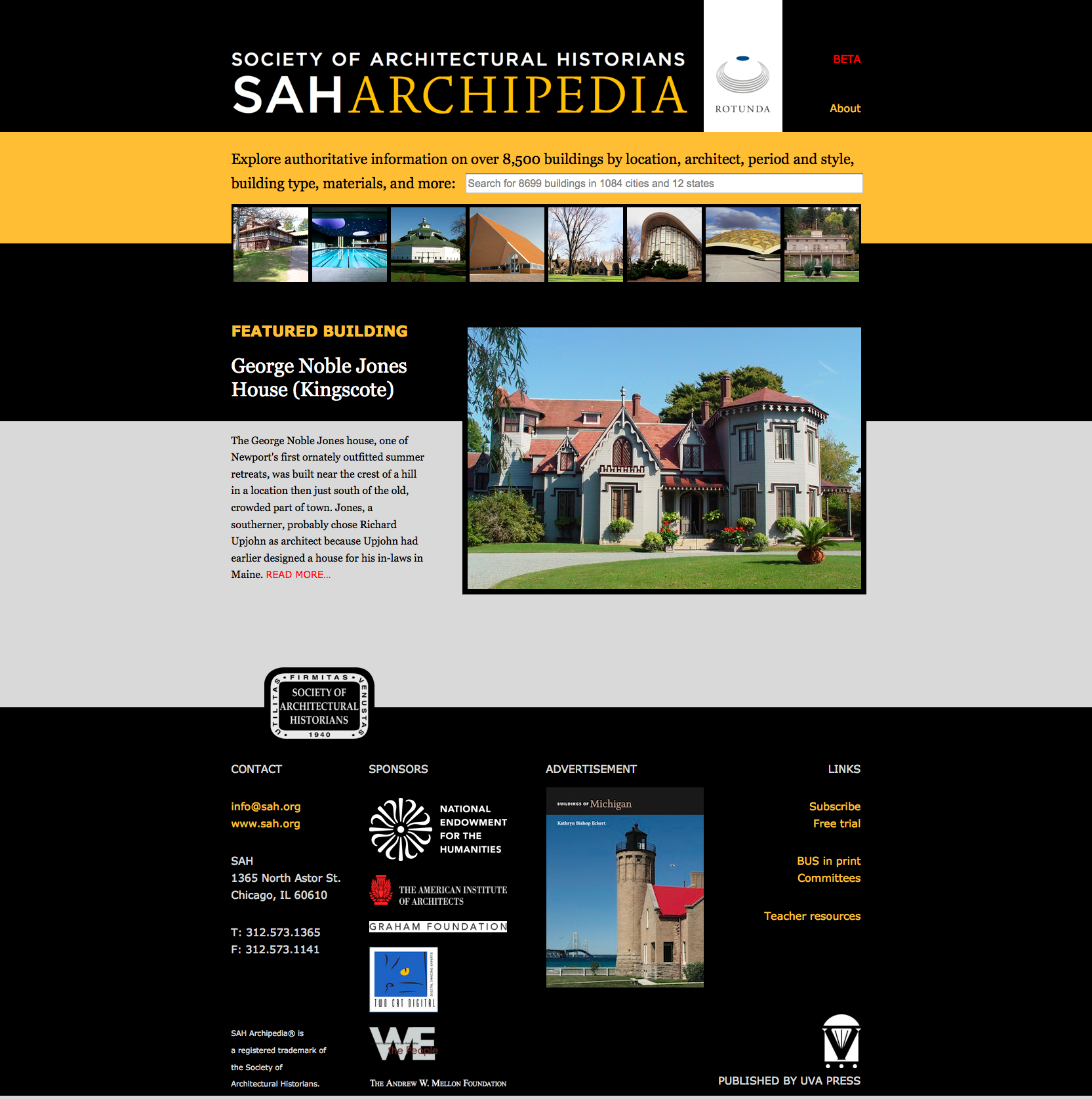From mudbrick to steel, from ancient cliff dwellings to contemporary office towers, the University of Virginia Press ’ online resource, “SAH Archipedia” – developed in collaboration with the Society of Architectural Historians – provides a richly illustrated, peer-reviewed database of some of the most notable architecture in the United States.
The new resource, published by Rotunda, the press’ digital platform, examines thousands of buildings in the context of their communities and landscapes, explores all the forces that shaped them – from the aesthetic to the historical, economic and geographical – and presents them in a fully searchable XML-based environment.
Drawn from the press’ award-winning “Buildings of the United States” book series, “SAH Archipedia” includes histories and thematic essays on the District of Columbia, the Tidewater and Piedmont areas of Virginia, West Virginia, Rhode Island, Boston, eastern and western Pennsylvania, Michigan, Iowa, Colorado, Nevada and Alaska. The Society of Architectural Historians describes the database as a cross-section of the country that demonstrates the richness and diversity of architecture and building practices across many centuries.
Pauline Saliga, the society’s executive director, said she hopes the new online publication will be used by everyone who is interested in exploring the history of American architecture.
“SAH Archipedia” contains more than 8,500 building entries; 6,000 photographs and drawings; 4,300 individual architects and firms; 1,300 unique building types; and hundreds of periods, styles and building materials, each tagged for searching. All search results and individual entries appear on dynamically generated maps.
The site also includes the interpretive introductions from the first 12 print volumes of the “Buildings in the U.S.” series. The website will add content and images as new work is done. This material from the “Buildings in the U.S.” volumes will be supplemented with original digital content created and edited in an online authoring environment, yielding entries that will ultimately encompass all 50 states.
“The University of Virginia Press has once again shown why it is considered the leading university press in pursuit of innovation in the digital humanities,” Saliga said.
“‘SAH Archipedia’ incorporates the spatial turn in digital humanities for the first time in a Rotunda publication,” said Mark Saunders, interim director of U.Va. Press. “As a collaboration between a university press and a scholarly society, it represents a new chapter in scholarly communications. From a publishing perspective, the project will be released in a hybrid model, blending licensed and free material, with a commitment to open metadata.”
“SAH Archipedia” will be released in two complementary versions: a scholars’ edition, for license to libraries; and a free website yet to be posted, “SAH Archipedia Classic Buildings,” which will feature more than 100 open-access entries on the most important buildings in each state.
“The launch of ‘SAH Archipedia’ is another step in the development of online scholarly resources that incorporates peer review, contextual information such as maps and satellite images, and tagging that provides further historical context,” said Ann Whiteside, librarian and assistant dean for information resources in the Frances Loeb Library of the Harvard Graduate School of Design. The online publication, she said, “has the potential to transform how architectural history is studied because of the way in which it marries imagery, scholarly rigor and database searchability within a single resource.”
The National Endowment for the Humanities provided major funding for “SAH Archipedia” and designated it a “We the People Project” for its role in encouraging and enhancing the teaching, study and understanding of American history, culture and democratic principles.
Additional funding was provided by the American Institute of Architects, the Graham Foundation for Advanced Study in the Fine Arts and Two Cat Digital, as well as U.Va. Press.
Media Contact
Article Information
October 10, 2012
/content/uva-press-presents-american-architectural-history-online

